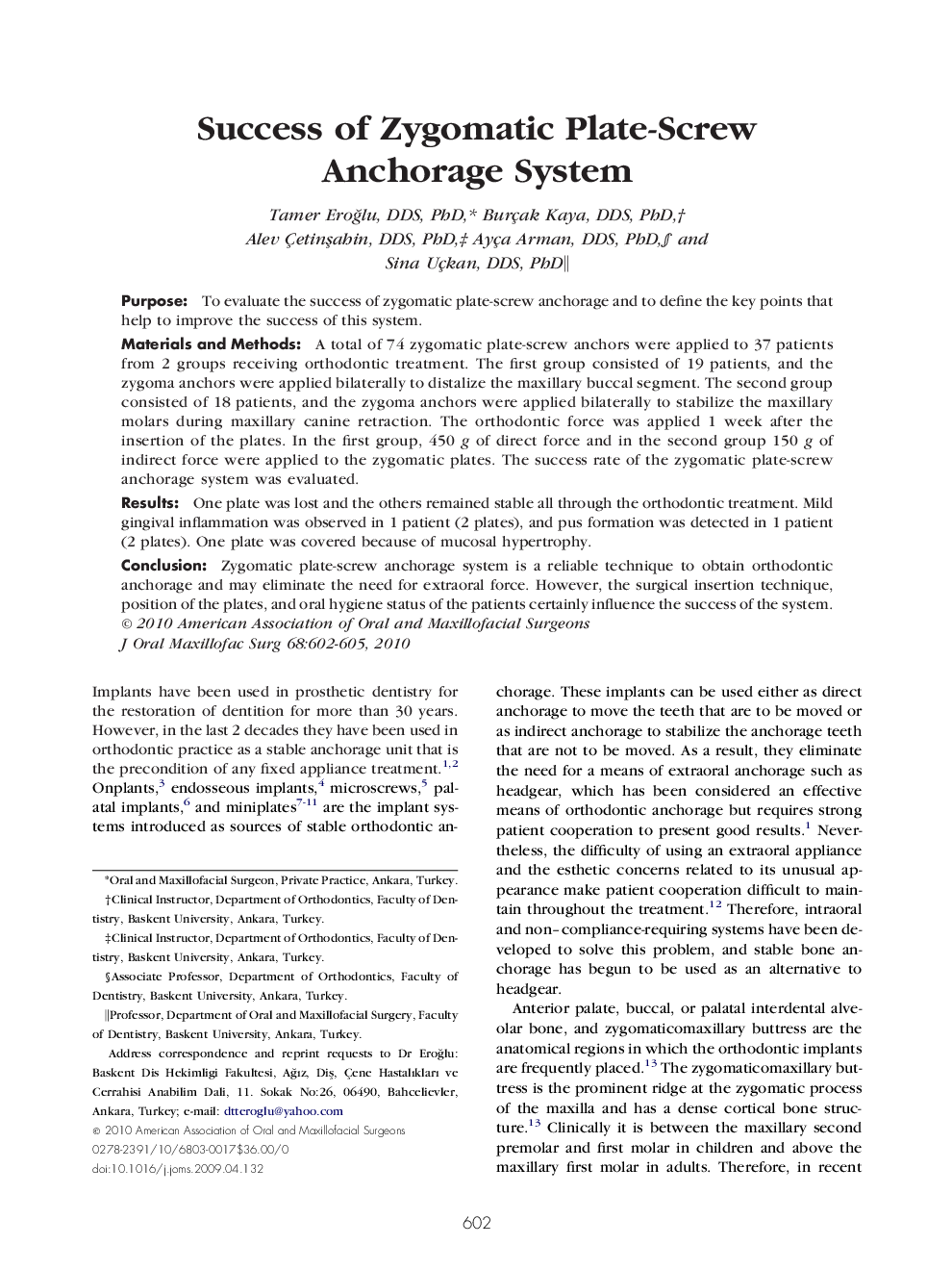| Article ID | Journal | Published Year | Pages | File Type |
|---|---|---|---|---|
| 3158332 | Journal of Oral and Maxillofacial Surgery | 2010 | 4 Pages |
PurposeTo evaluate the success of zygomatic plate-screw anchorage and to define the key points that help to improve the success of this system.Materials and MethodsA total of 74 zygomatic plate-screw anchors were applied to 37 patients from 2 groups receiving orthodontic treatment. The first group consisted of 19 patients, and the zygoma anchors were applied bilaterally to distalize the maxillary buccal segment. The second group consisted of 18 patients, and the zygoma anchors were applied bilaterally to stabilize the maxillary molars during maxillary canine retraction. The orthodontic force was applied 1 week after the insertion of the plates. In the first group, 450 g of direct force and in the second group 150 g of indirect force were applied to the zygomatic plates. The success rate of the zygomatic plate-screw anchorage system was evaluated.ResultsOne plate was lost and the others remained stable all through the orthodontic treatment. Mild gingival inflammation was observed in 1 patient (2 plates), and pus formation was detected in 1 patient (2 plates). One plate was covered because of mucosal hypertrophy.ConclusionZygomatic plate-screw anchorage system is a reliable technique to obtain orthodontic anchorage and may eliminate the need for extraoral force. However, the surgical insertion technique, position of the plates, and oral hygiene status of the patients certainly influence the success of the system.
